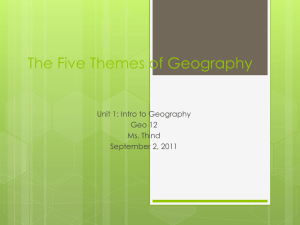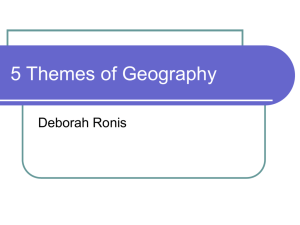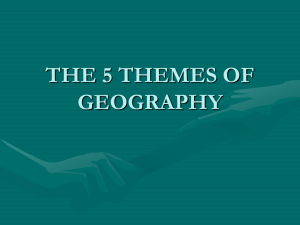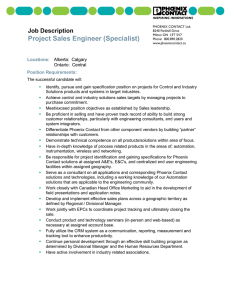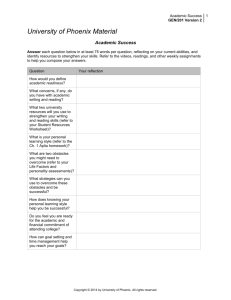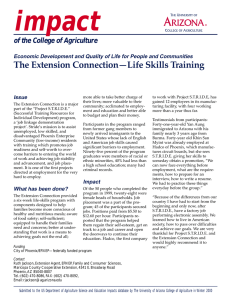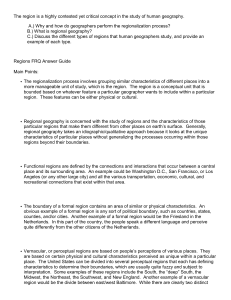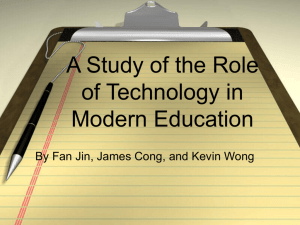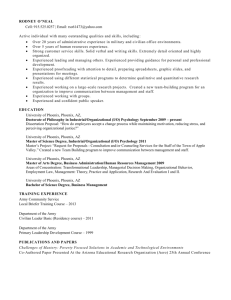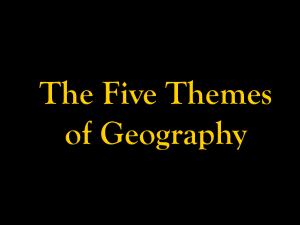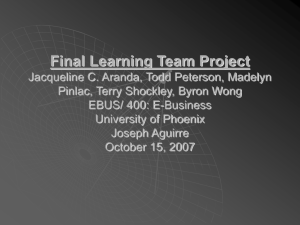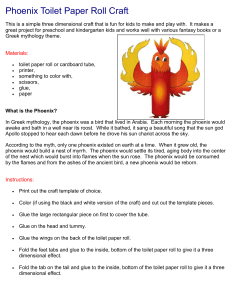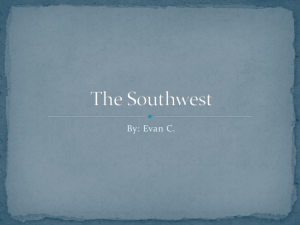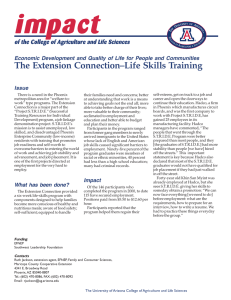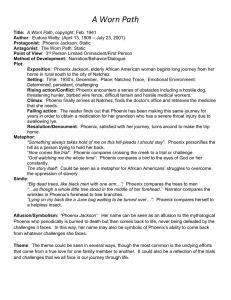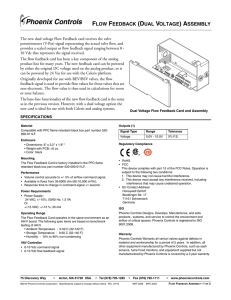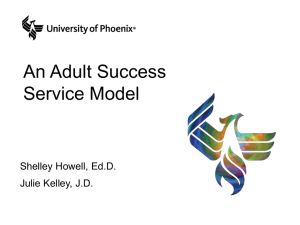The Five Themes of Geography - Phoenix Union High School District
advertisement
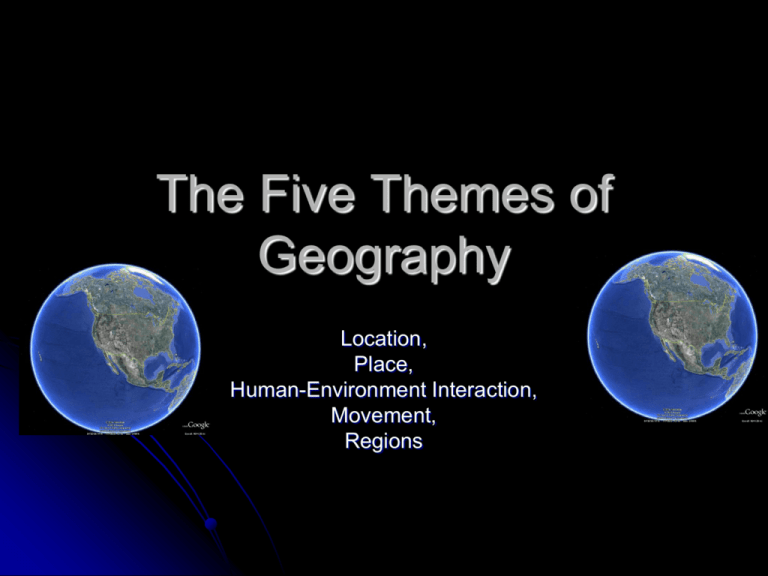
The Five Themes of Geography Location, Place, Human-Environment Interaction, Movement, Regions Location Location is the basis of geographic education Every event in life happens somewhere We use location to answer questions about where they happen. Location Location answers the question: Where Are We? Or Where is it? Locations can be absolute or relative Location Absolute locations are associated with latitude and longitude or a street address Location Example: Where is Phoenix? Answer: It is located at 33° North, 112° West Location Relative locations are described by landmarks, time, direction or distance from one place to another. Location Where is Phoenix located? Answer: North of Tucson. South of Flagstaff. Near Casa Grande Place Every place on earth has its own special qualities that make it different from other places. When we think of place, we look at the physical and human characteristics of the place Place Physical Characteristics are things determined by nature, such as climate, land forms, indigenous plants and animals. Human characteristics can be defined by the culture of a place. Example: language, clothing, architectural style Place Place is answered by the question: What kind of place is it? For example, what do you think of when you imagine China? Russia? Italy? Human/Environmental Interaction How do humans and the environment affect each other? How does the environment affect people? There are three key concepts to human/environment interaction Humans adapt to the environment Humans modify the environment Humans depend on the environment Human/Environmental Interaction Humans adapt to the environment People adapt to their environment by the type of clothes they wear depending on the weather Human/Environmental Interaction Humans modify the environment People modify the environment by heating and cooling buildings for comfort. Human/Environmental Interaction Humans depend on the environment People depend on major rivers like the Mississippi, Colorado and the Nile Human/Environmental Interaction Environment is not just trees, animals and climate, it is also the feel of the place. Big City Rural Area Landscape Movement The movement of people, the import and export of goods, and mass communication have all played major roles in shaping our world. Today, we live in a global village and global economy Movement The earth is populated by over 5.5 billion people. Most of us depend on other people from many different places to provide us with products and information. Movement Not only do humans move, but so do ideas, fashions, and fads. Question: How do we depend on people in other places? Question: How would our lives change if our movement options changed? Question: What would happen if our transportation methods changed? Question: How do we get food? Region Regions are human constructs that can be mapped and analyzed Regions are the basic unit of study in geography A Region is an area that displays a coherent unity in terms of the government, language, landform or situation Region There are three types of Regions Formal Functional Vernacular Regions Formal Regions are defined by governmental or administrative boundaries Ex. Yellowstone National Park Ex. The 9th US District Phoenix Union High School District Regions Functional Regions are those defined by a function or business If the function ceases to exists, the region no longer exists Ex. Silicon Valley The Rust Belt Regions Vernacular regions are those loosely defined by people’s perception Ex. The South, The Middle East Regions What region do we live in? What type of region is it? What are its characteristics?
